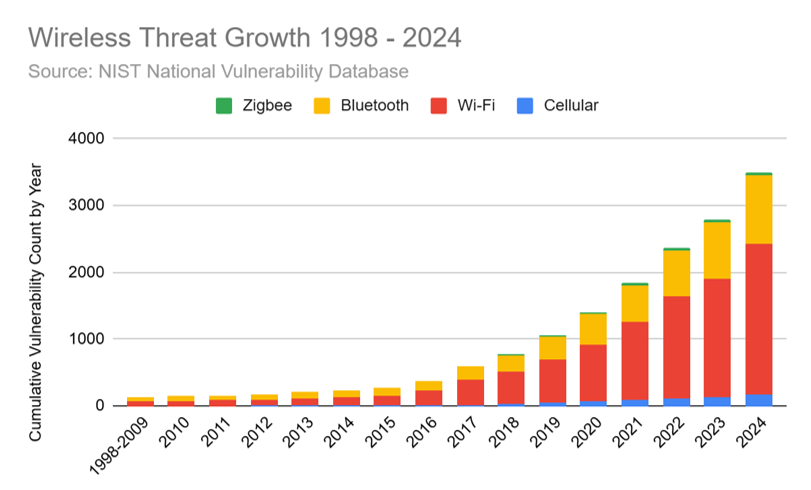The Importance of Wireless Airspace Defense in Today’s Enterprise Environment
The proliferation of wireless devices has fundamentally reshaped how businesses operate. Smartphones, laptops, tablets and Internet of Things (IoT) devices have become indispensable tools, enabling seamless connectivity and enhancing productivity. However, this explosion in wireless technology has also introduced significant vulnerabilities, making wireless airspace defense a critical necessity. Organizations must address these challenges to protect against increasingly sophisticated threats targeting the invisible wireless perimeter.

While enhancing convenience, wireless devices create new attack vectors that traditional security measures often fail to address. In corporate and industrial environments, malicious actors can exploit these devices to breach sensitive data, gain unauthorized access to networks, or disrupt critical operations. For instance, rogue access points or unauthorized devices in an office network can facilitate eavesdropping, data theft, or even ransomware attacks.
One of the primary challenges of managing wireless threats is their inherently covert nature. Unlike physical breaches, wireless attacks occur in an invisible spectrum, making them difficult to detect and mitigate without specialized tools. Traditional security solutions, such as firewalls and endpoint protection, are often ill-equipped to address these dynamic threats, primarily focusing on wired networks or specific devices. This gap in coverage leaves organizations exposed to a variety of risks.
Wireless airspace defense addresses these challenges by providing a comprehensive solution to monitor and secure an organization’s wireless environment. By continuously scanning the airspace, these systems detect and classify all wireless devices and activities within range. This includes identifying rogue devices that may attempt to infiltrate the network, unauthorized access points that bypass established security protocols, and malicious activities such as eavesdropping or network spoofing.
Real-time visibility is a cornerstone of effective wireless airspace defense. Organizations gain actionable insights into their wireless landscape, pinpointing vulnerabilities and responding swiftly to emerging threats. For example, anomalous behavior, such as an unauthorized device transmitting sensitive data, can be flagged and addressed before it escalates into a full-scale breach.
Beyond detection, wireless airspace defense also empowers organizations with robust investigation and response capabilities. Security teams can trace the origins of an attack, understand its scope, and implement measures to prevent recurrence. This level of insight is invaluable in mitigating the impact of security incidents and ensuring compliance with regulatory frameworks. Industries such as healthcare, finance and critical infrastructure have strict data protection and cybersecurity regulations. Wireless airspace defense helps maintain compliance by securing wireless environments and demonstrating proactive risk management.
As wireless technologies continue to evolve, so do the threats targeting them. Cyber criminals are constantly developing new methods to exploit vulnerabilities in wireless networks, ranging from advanced phishing tactics to sophisticated signal-jamming techniques. Businesses must stay ahead of these evolving threats by adopting proactive security measures. Wireless airspace defense provides the tools to adapt to this shifting threat landscape, safeguarding sensitive assets and ensuring operational resilience.
Wireless airspace defense is more important than ever in an increasingly wireless-first world. It offers a critical layer of protection that complements traditional security measures, filling the gaps left by conventional solutions. By securing the invisible wireless perimeter, businesses can confidently embrace the benefits of wireless technology without compromising their security posture. It enables organizations to monitor, detect, investigate and respond effectively to wireless threats, ensuring the safety of their data, operations and reputation. Investing in wireless airspace defense is essential to building a secure and resilient enterprise environment as wireless devices proliferate.





Comments